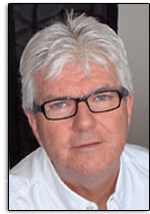There is no doubt that wind power is gaining ground across the planet. Double-digit growth continued in 2013 as 35 gigawatts (GW) of additional capacity were added. This brings the worldwide total to 318 GW – a 12.5 percent increase over the previous year. As encouraging as it sounds, this was, in fact, a significant drop from the average 21 percent annual growth rate over the last 10 years. On top of that, overall investment dropped from $80.9 billion in 2012 to $80.3 billion in 2013.
Among the world’s regions, the European Union is in the lead. Its 37 percent share of global installed capacity narrowly edges out Asia’s 36 percent. It’s interesting to note that 16 European countries now have more than 1 GW of total installed wind power, compared with 4 in the Asia-Pacific region. As before, 2013 saw China install more new capacity than any other country. Germany, the UK, India, and Canada rounded out the top few in terms of added joy. In 2013, China installed 16.1 GW of new wind power – 24 percent more than it added in 2012. As at the end of 2013, the country’s total installed capacity measured 91.4 GW, equivalent to six percent of China’s total. The percentage of wind-generated power in China continued to rise, which shows that problems connecting wind farms to the grid are being overcome (In 2011 alone, more than 10 billion kilowatt-hours [kWh] of wind power were lost because the grid lacked the capacity to absorb it.)
Several European countries had significant additions in 2013. Germany added 3 GW bringing its total to 34.25 GW and the UK installed nearly 2 GW of new, much of which was offshore. These two countries continue to be the region’s most prolific leaders. France, Denmark, Italy, and Spain remain in the top group in terms of overall increases adding 0.6, 0.6, 0.4, and 0.2 GW respectively in 2013. Europe now boasts some 117 GW of installed wind power, of which 34 percent lives offshore. The European wind market declined by 8 percent in 2013 versus 2012 as financing of new projects is falling of due to policy uncertainty and less appetising incentives.
Getting cold
Wind turbines must operate in all types of weather, not the least of which is in the challenging Northern climes. On June 11 the 8th Quebec (Canada) Wind Energy Annual Conference held in-depth workshops to discuss cold climate issues related to the industry. Members of the International Energy Association (IEA) Task 19 group concentrated their findings on low temperatures and icing conditions.
The Quebec wind industry is right to be concerned with winter considering that by the end of 2012, Canada had 37 percent of the 11.5 GW of global wind energy installed in moderate to severe icing climates. This is more than all of Europe (33%) or all of the U.S. (29%) at the time. The BTM World Market Update, 2012 forecasted that 57 percent of the globally added capacity by 2017 in such climate will be in Canada. By extension, Quebec will be hit the hardest as it boasts the second largest wind capacity behind Ontario, which also gets hit hard by winter weather.1
During the conference workshop, the group dissected concerns related to ice assessment, ice protection systems, health and safety (ice throw), turbine icing loads and dynamics, and operations and maintenance. The highlights determined in Quebec are as follows:2
1. Ice assessment
The presence of a sufficient amount of ice on a wind turbine blade will affect its aerodynamics which will lead to lower energy yield. An average of 7.5 percent of annual power production was lost in 2011 due to icing alone. Under such conditions, turbines can be stopped for any amount of time leading to loss in revenue. Severity of ice is often underestimated during siting and there is significant variability in year over year severity of icing. Without proper correlations between long-term climatology, instrumental icing and production losses, the additional cost in instrumentation for ice assessment during a standard wind assessment phase makes the process redundant. During the planning phase, the proximity of public roads, snow-mobile trails, ski slopes, farm livestock, electrical infrastructure, etc. must be considered. In all cases, warning signs should be posted clearly indicating any danger.
Turbines are often placed purely based on resource assessment. If more accurate long-term icing forecasts were available, sites would be better selected and ice protection systems could be put into play.
2. Ice protection systems
The panel went on to discuss ice protection systems (IPS). The idea behind an IPS is to recover all or part of energy lost due to icing by preventing ice from accruing on blades or shedding any accumulated ice.
Thus far technological maturity includes hot-air and electro-thermal de-icing. Anti-ice coatings are less expensive and easier to maintain but have yet to see any long-term results under working conditions. Some independent service providers are proposing de-icing solutions using helicopters, rope access or even robots.
3. Health and Safety (Ice throw and ice shed)
Ice projected from a blade in motion is referred to as ice throw. Ice falling from a non-operating turbine is called ice shed. The force impact of a 1 kilogram piece of ice being released from the tip of a 40 metre blade spinning at 15 revolutions per minute can land a notable distance from the turbine and could seriously injure a person. Livestock, vehicles or infrastructure such as power transmission lines, transformers or even tower access stairs can receive substantial injury and/ordamage. Small pieces of ice falling from the 90 to 100 metre height of a turbine blade not in operation can easily be fatal to humans.
Simulation models are being developed to predict the probability of impact of ice fragments based on turbine specifications, (hub height, rotor diameter, tip speed), wind statistics (direction, speed), and assumptions regarding ice (hours of icing per year, size, and weight of ice fragments, etc.). It should also be noted that ice shed can prevent service technicians from accessing turbines.
4. Turbine ice loads and dynamics
Ice build-up on blades may cause aerodynamic and mass imbalances leading to increased fatigue loads or even critical over-stress loads. Ice-induced loads can cause side-to-side fatigue in the tower and may affect the behaviour of turbine components and sub components.
One Quebec-based firm is optimising their ‘ice operation mode’ in order to improve production yield during icing events by modifying pitch and tip speed ratio settings in the turbine controller.*
5. Operation and Maintenance in the winter
Production yield is greater in the winter due to higher average wind speeds and greater air density. At the same time, losses caused by downtime are more expensive. On top of that weather often causes access time and time on site to be higher. Summer maintenance is a given but many operators are faced with difficult (read expensive) choices between opting for a snow removal strategy or using winter-capable vehicles to gain access. Less daylight and long distances between sites in extremely trying conditions can really affect the bottom line as average maintenance costs average 30 percent more in the winter.
6. Conclusion3
The challenges presented by winter in a Northern climate have forced operations and maintenance (O&M) entities to adapt and innovate. They are counting on operators to share lessons learned and are encouraging ISPs to develop new services and technologies. The goal is to build a stronger industry capable of competitively harnessing the immense potential of wind in a cold climate.
*Much of this type of testing is still in the early stages. Thus far, there is limited data available.
1 Wadham-Gagnon, M. “Quebec’s Wind Energy Industry’s concerns and the initiatives relative to Cold Climate.” WIND ENERGY update (August 2013): 2
2 Ibid: 3-9
3 Ibid: 9














